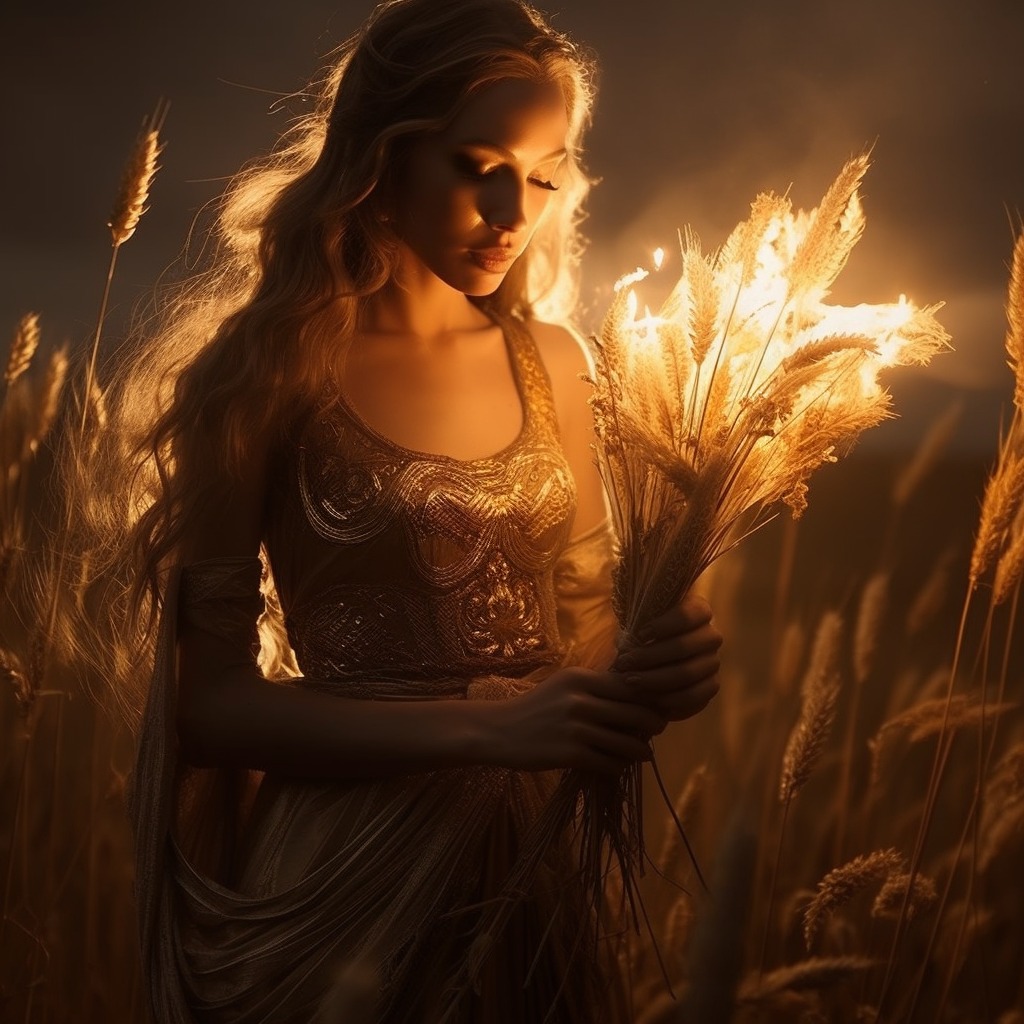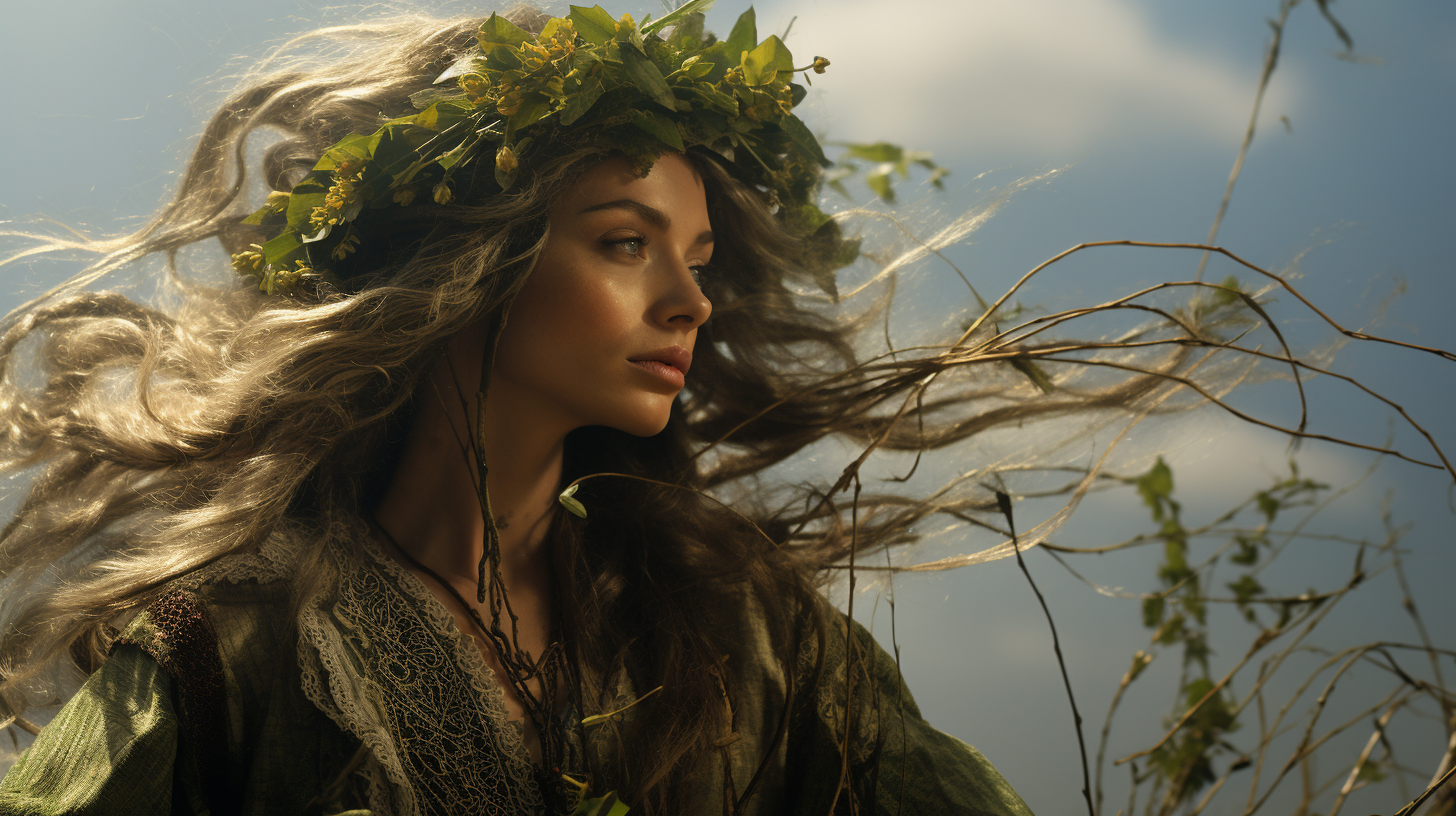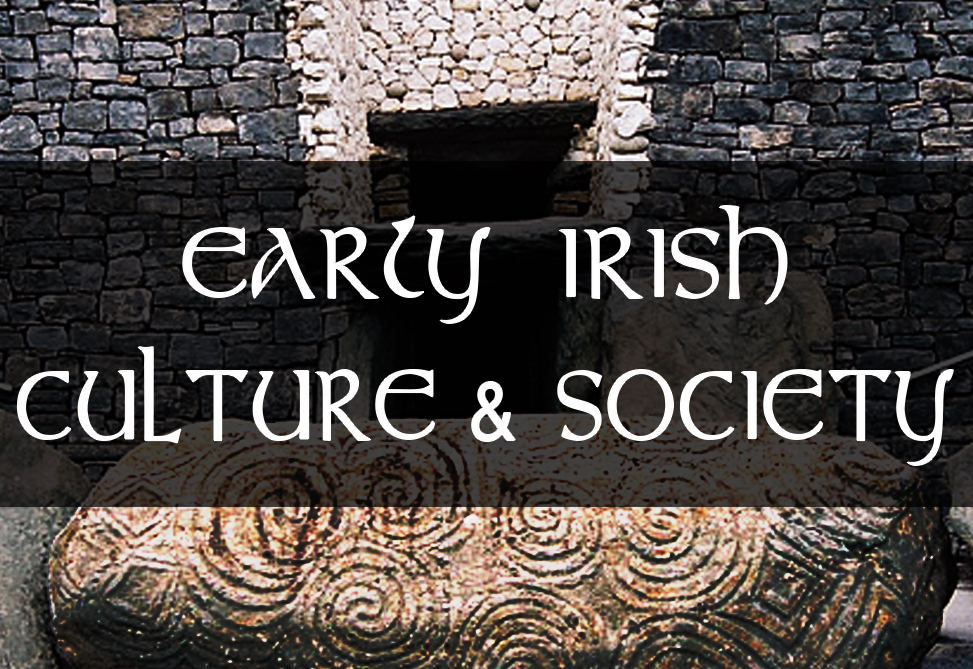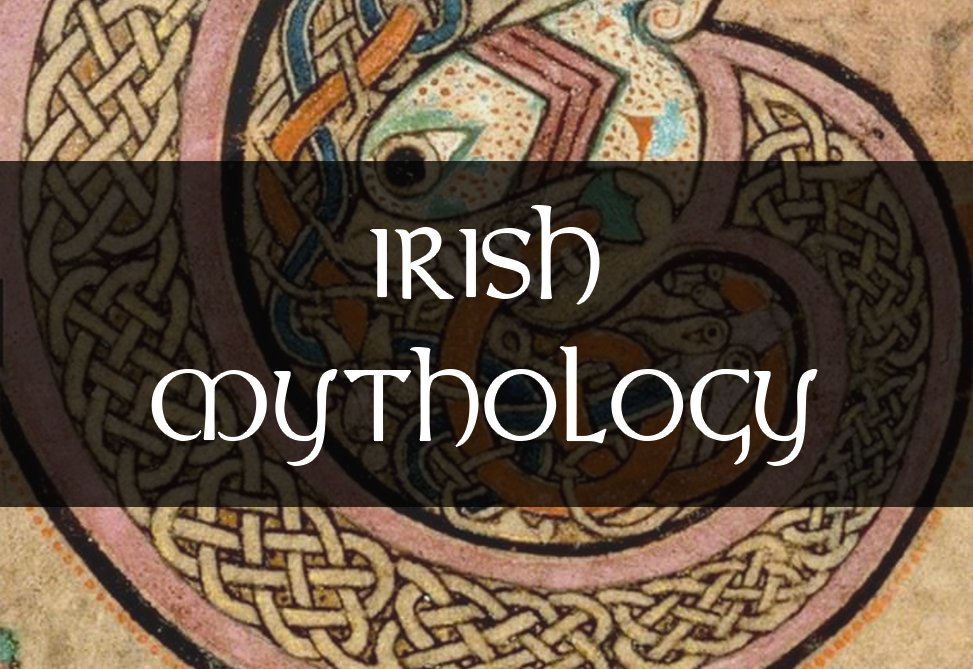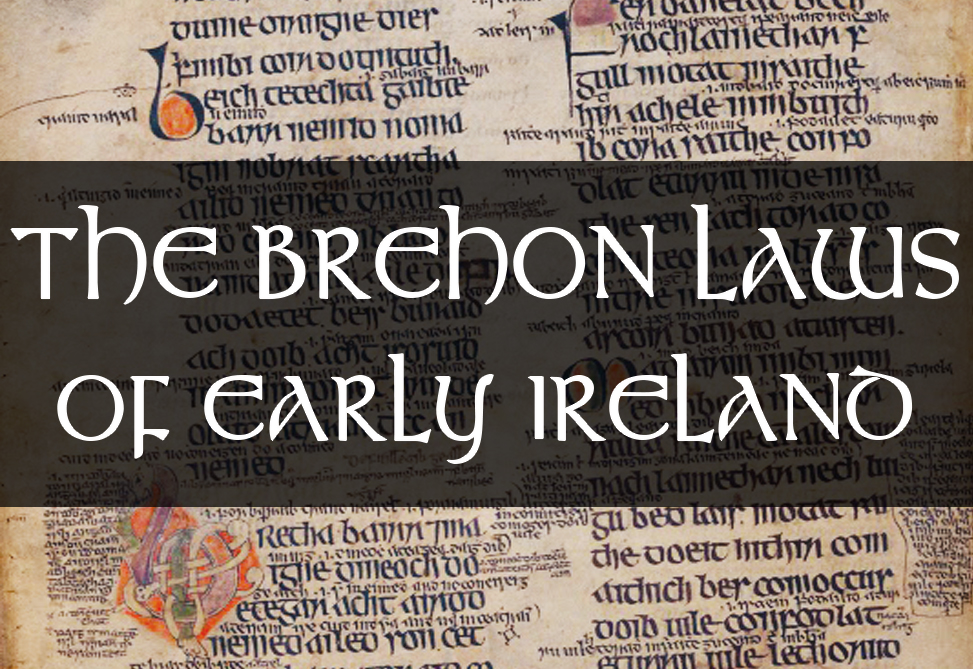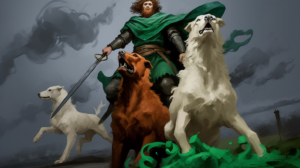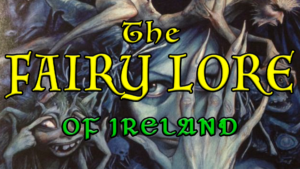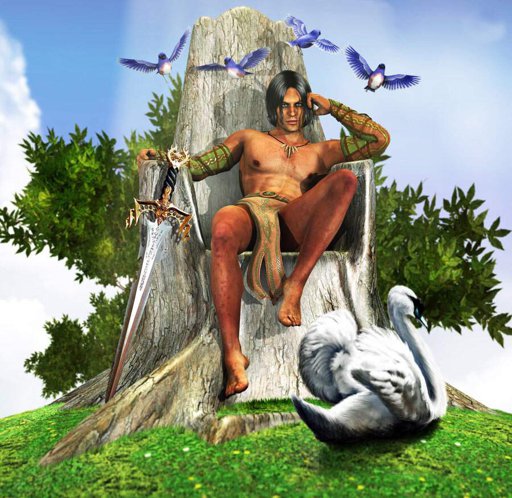In the heart of Irish mythology lies a tale of unmatched sacrifice, strength, and maternal love – the story of Tailtiu, a figure who embodies the essence of agriculture, culture, and prosperity through self-sacrifice. She’s not just a deity; she represents Ireland’s undying spirit and its deep-rooted connection to the land. A deity synonymous with the earth’s bounty, Tailtiu’s tales are woven with threads of sacrifice and devotion. She is the very embodiment of the spirit of Ireland: fierce, determined, nurturing, natural, and resilient. Her story isn’t one of battles against gods or mythical beings, but rather a testament to resilience, sacrifice, and unwavering love for the land and its people.
In essence, Tailtiu’s legacy isn’t just about her ties to deities or royalty but about a goddess’s profound love for her land and its people. In her, we find the embodiment of sacrifice and the profound connection between the land and those who nurture it. In today’s age, as we grapple with our relationship with nature, Tailtiu’s story serves as a poignant reminder of respect, responsibility, and the eternal bond we share with the earth.
In today’s Ireland, Lughnasadh may not be celebrated with the same fervour as in ancient times, but its echoes still resonate through modern festivals and fairs. Some neo-pagan communities continue to observe the day with rituals that pay homage to Tailtiu and the other Irish deities.
Tailtiu: The Goddess of Harvest and Valor
At the heart of Tailtiu’s legacy is her dedication to agriculture. She didn’t just represent the harvest; she was an active participant in it. Legend narrates the tragic tale of her death, a result of her unwavering commitment to clearing vast lands for cultivation. It’s a poignant reflection on the sacrifices made for prosperity. Her grief-stricken husband, Bregon, bestowed upon her the highest honour, naming the cleared land after her. This wasn’t just a gesture of love, but an immortal declaration of her importance to the Gaelic people.

Tailtiu, renowned as the foster mother of Lugh, one of the most prominent figures of the Tuatha Dé Danann, symbolizes the spirit of the earth itself. Her legendary dedication to agriculture is etched in the tale of her clearing vast expanses of land, an endeavour so strenuous that it ultimately led to her death. Rather than a warrior’s death in battle, Tailtiu’s sacrifice came from her commitment to the prosperity and sustenance of her people.
Even in her death, she birthed life through her foster son, Lú Lámhfadasamildánach, Lugh the long-armed master of all arts, who instituted the Lughnasadh, or Tailteann Games, in her honour ensuring that her spirit and enduring memory lived on until the current age.
Early Life and Modern Influence
Born to royalty, as the daughter of King Eochaid Airem and Queen Morrigan, Tailtiu’s life was always destined for greatness. Her marriage to Bregon, the King of Ireland, solidified her status, but it was her actions, her tenacity, and her vision that shaped her legend.
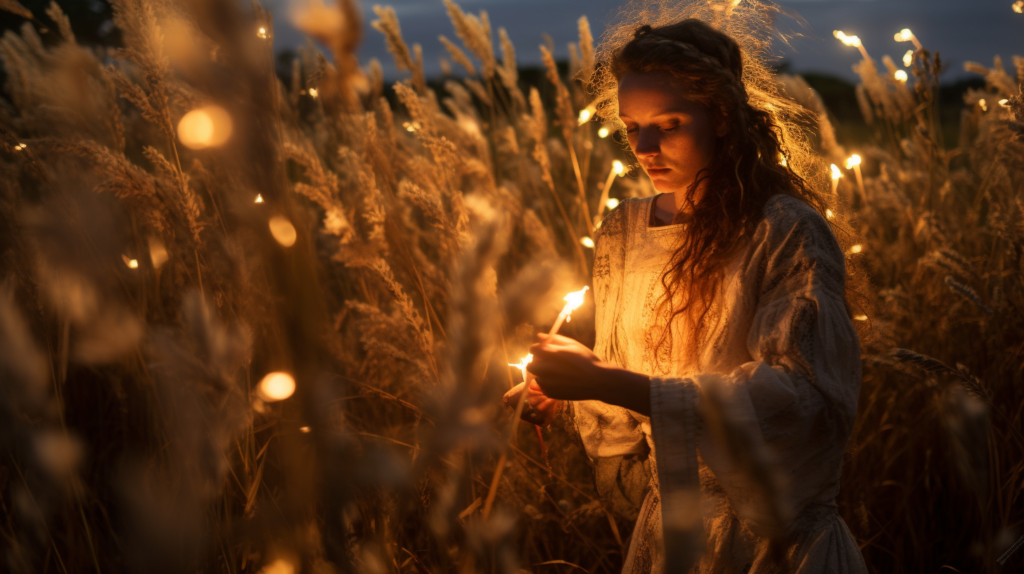
Her influence was multifaceted. As a woman, she was revered. As a mother, she was adored. And through her death, she birthed the Tailteann Games, a beacon of Irish culture, sportsmanship, and unity. An ancient Irish Olympics that predated the ancient Greeks by millennia. These games were more than just an event; they were an institution, lasting centuries, only pausing with the dawn of Christianity in Ireland and ceasing for several hundred years after the coming of the Noman and later Anglo invaders. It would be reinstated for a time in 1922 but, sadly, not sustained.
In modern times, while the roar of the Tailteann Games might have dimmed, her spirit is kept ablaze with the celebration of Lughnasadh. Named after her son, Lugh, this harvest festival commemorates the sweat, tears, and love Tailtiu poured into the lands of Ireland. It serves as a reminder of the cyclical nature of life, of death and rebirth, endings and new beginnings.
Lughnasadh, the pagan harvest festival, is another enduring tribute to Tailtiu. Celebrated in memory of her sacrifices for agriculture and the land, it’s an occasion of gratitude, reflection, and hope. It marks the beginning of the harvest season, a tangible fruit of Tailtiu’s labour and love.
Honouring and Reconnecting with Tailtiu’s Legacy Today
Traditional Irish customs during Lughnasadh include feasting, games, and social gatherings. The first fruits of the harvest are gathered and shared among friends and family, and a special loaf of bread, known as “Lughnasadh bread,” is often baked. Athletic competitions were historically held during this time, including events like hurling, horse racing, and wrestling.
Another essential aspect of Lughnasadh is the visit to holy wells or sacred mountains. Pilgrimages and ceremonies at these sites are meant to secure blessings for a bountiful harvest. Music, dancing, and storytelling would often accompany these gatherings, weaving together the spiritual and communal aspects of life.
For those who wish to connect with Tailtiu’s indomitable divine spirit this Lughnasadh, one might consider visiting agricultural sanctuaries, reflecting on personal journeys, celebrating the fruits of hard work, or immersing oneself in creative endeavours.
Tailtiu’s story isn’t just about remembering her past. Rather, it inspires us Irish folk today to draw from her example, to remember it and to make a conscious choice to cultivate a better future. Even if this requires great sacrifice. This is Tailtiu’s lesson.
- Visit a place that is sacred to agriculture, such as a farm or a garden. Do so with intent and mindfulness.
- Take some time to clear away any clutter or debris in your own life, as Tailtiu did. Why wait until Spring to clean out the house? Autumn is time for clearing also. For clearing the fields, for reaping the harvest and for bringing in the bounty of past labour.
- Spend time with loved ones and enjoy the fruits of their labour also. Visit the women in your life. The matriarchs. Respect their sacrifice as Tailtiu sacrificed also.
- Give thanks to the God (or gods) of nature for their bounty and the gift of life. Appreciate the signs of the changing season. Listen to the whisper of the wind as it rustles through the leaves and know that you are nature too.
- Reflect on the past year and make plans for the year ahead. Set intentions, both spiritual and physical. Take stock of your accomplishments and shortcomings in the year past, and look ahead to the coming of Spring and a new dawn.
- Honour Tailtiu and Lugh by doing something creative, such as writing a poem, painting a picture, or singing a song (preferably in the Gaelic language).
Tailtiu’s story reminds us of the intricate relationships between human beings, the land, and the divine. Her sacrifice is not just a myth but a symbol of our deep connection to the Earth and a reminder of the labour that sustains us. Lughnasadh, with its blend of joy, gratitude, and reverence, continues to be a reflection of these timeless truths.
In August’s golden warmth, the memory of Tailtiu and the traditions of Lughnasadh invite us to pause and appreciate the abundance that surrounds us. They beckon us to join hands in a dance that has been passed down through the generations, a dance of life, harvest, and community, as eternal as the rolling hills of Ireland itself.
